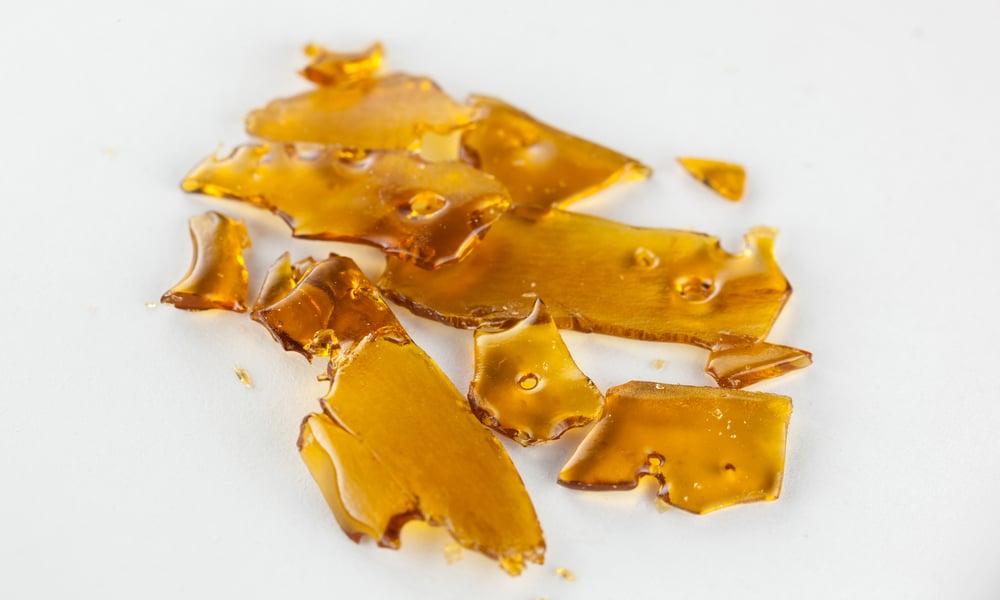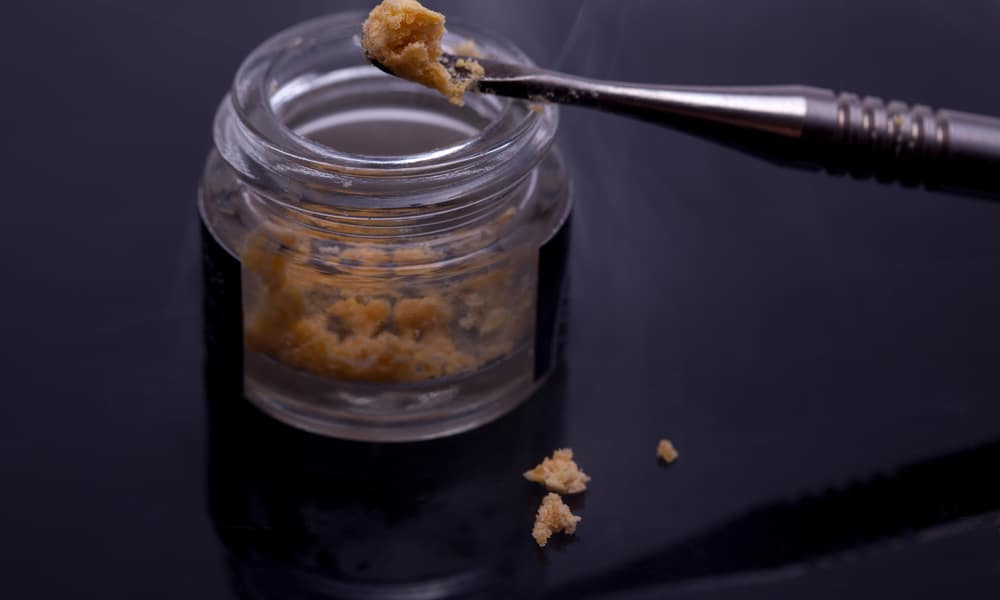Recently, there has been an explosion of experimentation in the weed concentrate industry. Professional canna-chemists are creating dozens of novel concentrate consistencies to satiate dabbers’ demands. Besides old-school hash, cannabis fans can pick up high-potency concentrates that mimic everything from sauce to hard candies. Arguably, the three most discussed (and confused) cannabis concentrates include shatter vs wax vs crumble.
While shatter, wax, and crumble aren’t the same, they aren’t as distinct as many tokers believe. Each of these concentrates may have a different texture, but customers shouldn’t rely on this feature when deciding which product to buy.
Shatter vs Wax vs Crumble — What’s The Big Difference?
From an extraction point of view, there’s virtually no distinction between shatter vs wax vs crumble. Extractors often use a solvent like butane to separate trichomes from cannabis buds and then heat the resultant extract to remove excess butane.
However, if manufacturers want to make shatter, they will let the concentrate sit and harden. Wax and crumble, on the other hand, need extra aeration—and that means additional agitation! Extractors deliberately shake their wax or crumble to give these concentrates their looser consistencies.
Herein lies the crucial distinction between all cannabis concentrates: texture. Shatter is as hard as glass, while wax and crumble are softer and more malleable. Technically, crumble is a type of wax that’s drier and feels like feta cheese.
Some people claim waxes are “tastier” than shatter because they’re heated at lower temperatures. Arguably, the higher temps “shatter” shatter’s delicate terpenes. However, there’s no other noteworthy distinction between these concentrates.
So, when you’re shopping for a concentrate, please remember that you can’t determine a product’s potency by its texture. For that info, you have to review third-party lab results and examine a concentrate’s THC, CBD, and terpene levels.
How Do People Choose Between These Concentrates?
Just like each toker has a different favorite strain, not every dabber enjoys the same concentrate. Some people love the snap of cannabis shatter, while others prefer scooping wax or crumble on their dabbing spoon. Choosing between these high-quality concentrates is primarily a matter of personal preference.
Arguably, flavor-chasers will prefer waxes over shatter because they tend to have higher terpene percentages. However, the primary concern shoppers should consider is texture. Do you like scooping wax or breaking pieces of shatter?
Customers should also remember each of these concentrates could have wildly different potencies—but these cannabinoid levels aren’t a reflection of their consistency. Instead, a concentrate’s power comes from its source material (i.e., cannabis flowers). Strains with high THC will result in THC-rich concentrates, while hemp flowers will produce non-psychoactive CBD products.
The only way to determine a concentrate’s effects is to ask for a third-party-verified Certificate of Analysis. These standard tests should fill you in on all the key metrics surrounding your concentrate’s cannabinoid and terpene levels. If you can’t get hold of a COA, you should be suspicious about ordering from that company.


